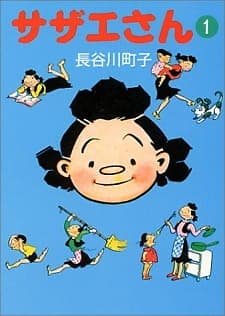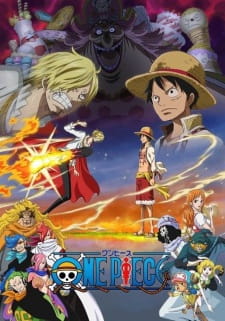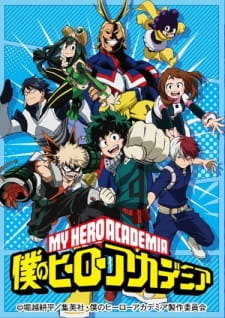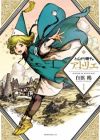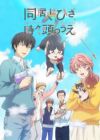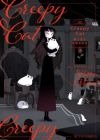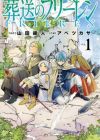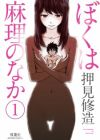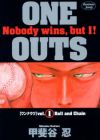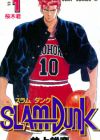Audience Shift
Anime
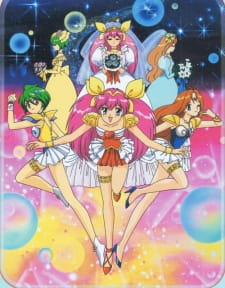
TV, 1995,
51 eps
Me:-
Author:-
The original anime and manga were aimed at young girls, while DX was aimed at male fans and had more fanservice.
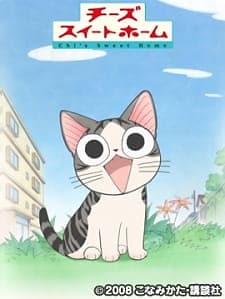
TV, 2008,
104 eps
Me:-
Author:-
was originally a seinen manga that basically served as a "breather" series in the magazine it was published in. Because of it's family-friendly nature, both anime adaptations and nearly all merchandise has been aimed at preschoolers, with the aforementioned anime adaptations airing in morning timeslots alongside kodomomuke series.
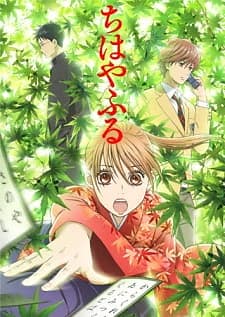
TV, 2011,
25 eps
Me:-
Author:-
The original manga was aimed at professional Karuta players Womans, The anime according to common opinion seems to have a narrative mold from a Generic Chick Lit For not Very Competitive Women Who Play Straight the Rules of This Game.
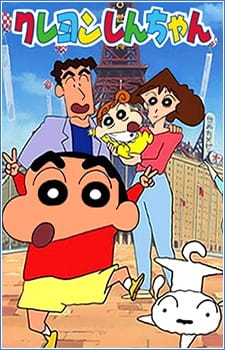
TV, 1992,
? eps
Me:-
Author:-
While the manga is seinen, the show is actually considered a family show despite retaining some of its raunchy humor and airs in a primetime slot.note Most anime that airs in Japan intended purely for adults is "late night anime" airing from 11pm-4am. These shows also aren't intended for mainstream audiences.
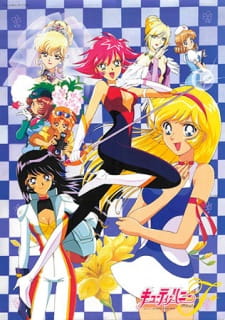
TV, 1997,
39 eps
Me:-
Author:-
While the original Cutie Honey was a series aimed at a male audience, Cutie Honey is a Shoujo Magical Girl series.
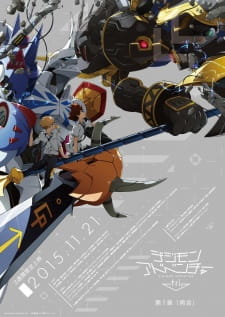
Movie, 2015,
1 ep
Me:-
Author:-
This is the one of the few Digimon animations to be targeted at adults, following the video games and X-Evolution in having more mature plotlines, as well as the franchise as a whole shifting towards the adult market. Since the anime films are geared towards an audience that grew up watching Digimon Adventure, and many of the said fans happen to be adults, this is deliberately invoked.
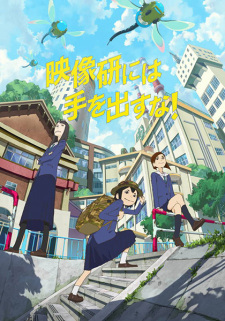
TV, 2020,
12 eps
Me:-
Author:-
It is aimed at adults but some publishing companies target it as aimed at teenagers.
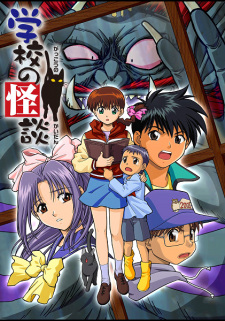
TV, 2000,
19 eps
Me:-
Author:-
Similar to Shin-Chan, Ghost Stories is a kids show, but licensor ADV Films figured it would sell better if they gave it a crass Gag Dub and aimed it at adults. It worked, as the gag dub is pretty much the only reason the show is even remembered in the United States.
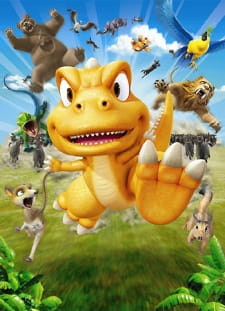
TV, 2012,
50 eps
Me:-
Author:-
The Original Manga Is Seinen ala PG-13 but It's Korean Animated Adaptation Is Aimed at Young Children.
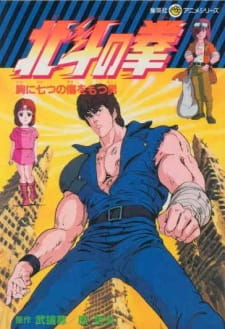
TV, 1984,
109 eps
Me:-
Author:-
has a fandom that consists overwhelmingly of adults not only in the West but even in its homeland Japan despite the original manga being a Shonen series. This can be attributed to a combination of its relatively dark and brutal setting (even for a Shonen series being released in the Showa era, when censorship was relatively light), its mainstream popularity back in its original release, and its age (as most of its fans who were following it when it was still being published in Shonen Jump would now be in their 30s). Having plenty of brutal, gory battles and a complex relationship between the protagonist Kenshiro and the main villain for half the story Raoh cause it to reach Seinen levels of themes. It's so brutal that, even in modern Japan, bookstores hesitate to place Fist of the North Star in the Shonen section and it's quite common to see it placed in Seinen sections or other demographics aimed at adults. And all recent releases in the franchise, in particular Fist of the Blue Sky (which was written by the manga's original authors, Hara and Burunson), have been officially classified as Seinen and have been published in magazines aimed at adult audiences.
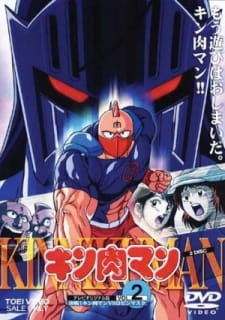
TV, 1983,
137 eps
Me:-
Author:-
The original manga was Shonen, but the anime version seems to be aimed at kids.
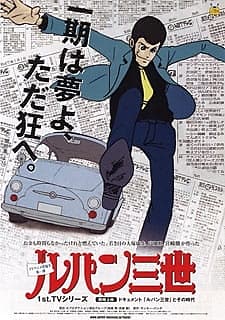
TV, 1971,
23 eps
Me:-
Author:-
swaps between Shōnen and Seinen at what is basically random - none of it is strictly kids stuff, but it ranges from James Bond-esq "risque, but basically family-friendly" (The Castle of Cagliostro and Red Jacket) to containing extremely violent situations and dark, gritty themes. (The Woman Called Fujiko Mine, some parts of Part 5, and the Jigen and Goemon short films) The original manga itself is kind of a middle ground - it arguably has the darkest, most adult situations of the entire franchise, but also at the same time has an off-the-wall, No Fourth Wall style of humor.
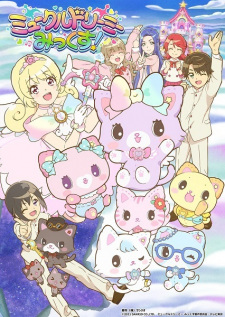
TV, 2021,
50 eps
Me:-
Author:-
In December 4th, 2020, a second season of the show was announced, titled Mewkledreamy Mix!. unlike the first season, this one, which's aimed at the preschool demographic.
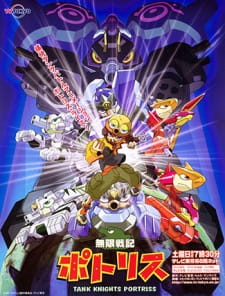
TV, 2003,
52 eps
Me:-
Author:-
Zig-Zaged with the Original Game Aimed at Fixed-Screen Run-n-Gun Players without a Story, the anime Is Aimed at Those Who Follow Epic War/Sci-Fi Stories Since It's Made by Sunrise, takes on the main characters but sticks with over-the-top personalities, however a story is added to appeal to the audience who is interested in the narrative twists hinted at, It's a backslash to those who played the original game on PC Feel Down because they expected a story as an excuse.
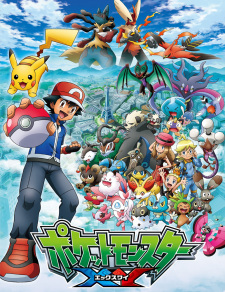
TV, 2013,
93 eps
Me:-
Author:-
Similarly, the Mega Evolution specials are a spinoff of Pokémon the Series: XY. Unlike the rest of the series, they are clearly meant to appeal to teenagers and young adults just as much as kids due to their older cast and focus on the "badass" mons, as well as their similarity to the popular Pokémon Black 2 and White 2 animated trailer. Eventually, the storyline would fully merge with the main series itself, turning the final arc of the XY series, XYZ, into an action-packed, darker and more dramatic adventure for Ash and his friends than in the past.
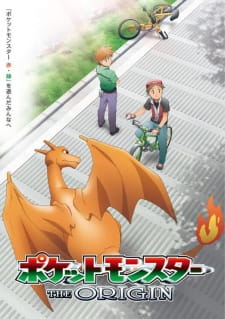
TV Special, 2013,
4 eps
Me:-
Author:-
while still family-friendly, is the first Pokémon work to definitely be aimed at the franchise's adult fansnote specifically, the ones who grew up with Pokémon Red and Blue more than its traditional demographic of children. Other incarnations are mostly "all-ages" (like the main RPG games) or for kids. Pokémon Generations, its Spiritual Successor, continues this trend.
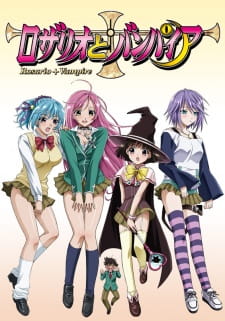
TV, 2008,
13 eps
Me:-
Author:-
The infamous anime version of Rosario + Vampire was aimed at a male audience, moreso than the manga was. Its emphasis on sexual fanservice at the expense of the original plot of the manga was a cause of outrage among fans, many of whom to this day are still demanding a more manga-faithful reboot.
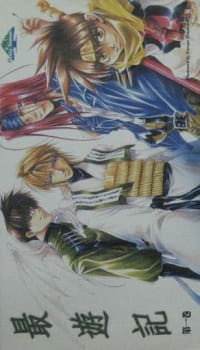
OVA, 1999,
2 eps
Me:-
Author:-
was originally shonen manga but shifted to a josei publication.
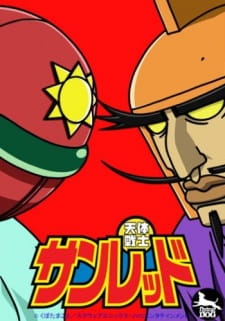
TV, 2008,
26 eps
Me:-
Author:-
The Astro Fighter Sunred anime was based on a seinen manga, yet with the removal of some sex jokes and a downplay of the violence to the cartoonish the result was a perfectly kid-friendly sentai parody, without losing any of the underlying satire and adult-aimed situational comedy of the original.
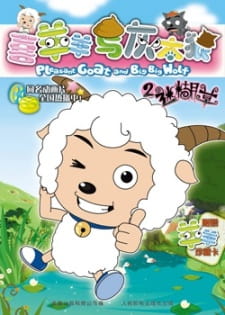
TV, 2005,
530 eps
Me:-
Author:-
Mr.Wolffy, Mr.Right! is aimed at a slightly older audience. This is apparent due to it being about Wolffy's relationships at the workplace.
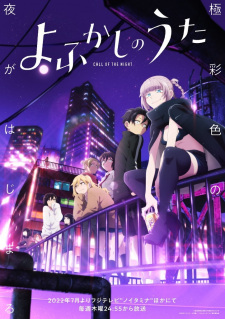
TV, 2022,
13 eps
Me:-
Author:-
while the manga is Shonen Supernatural/Romantic without explicit content, unexpectedly the anime in Japan is considered aimed at a mature audience, the story is structured like a soap opera probably parents would not consider this show as suitable for children and families They May find the Story Uninteresing or Boring.
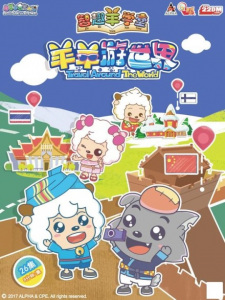
ONA, 2017,
26 eps
Me:-
Author:-
is aimed at a younger audience than the original. It features cuter designs, less drama, No-Slapstick or Rude Language Like Cartoons for Older Children. This Show Is now on the educational Roots.
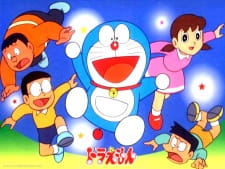
TV, 1979,
1787 eps
Me:-
Author:-
Since 1983-2007 It has been serialized for The kindergarter Magazine Maeba, including Some Lower-Grade elementary school students, and in the case of the theater version, the story is well-suited to children so that it can embrace not only children but also toddlers.
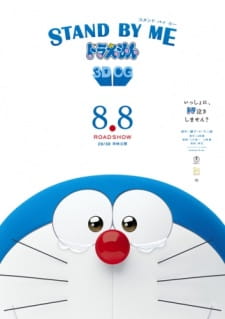
Movie, 2014,
1 ep
Me:-
Author:-
Unlike the Predecessor, Stand by Me Doraemon Is Now Targeted at General Families Audience Because of It's Important Themes Such the Loss, Grief and Relationship Issues and Things that Children Not Fully Understand.
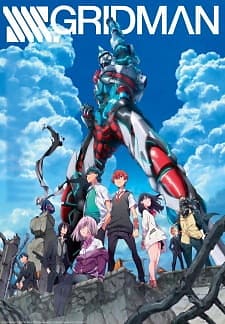
TV, 2018,
12 eps
Me:-
Author:-
and its US counterpart Superhuman Samurai Syber-Squad were primarily aimed at kids. SSSS.GRIDMɅN, on the other hand, is more geared the teens and young adults that grew up with the former two, and as a result tends to have more lower-deck scenes and Darker and Edgier plots. The merch is similarly shifted to a general non-tokusatsu audience, with most of it focusing on Rikka and Akane over Gridman and the kaijuu.

TV, 2009,
25 eps
Me:-
Author:-
Shugo Chara Party!, the third anime season of Shugo Chara! was aimed at the preschool/early elementary crowd, while the previous seasons were aimed at older children. It unsurprisingly bombed, and pretty much killed off the franchise in Japan.
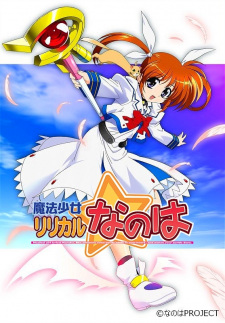
TV, 2004,
13 eps
Me:-
Author:-
is an odd case, being a fanboy Dating Sim spin-off. It mutated into a Magical Girl show, of which (wholesome) versions are usually targeted to young girls. However, its philosophy and treatment of the main character was very different than shoujo usually plays, which ended up attracting the usual fans who wanted something different. This group is big enough that some countries that licensed it cut out the Fanservice and ended up marketing directly to this younger age group.
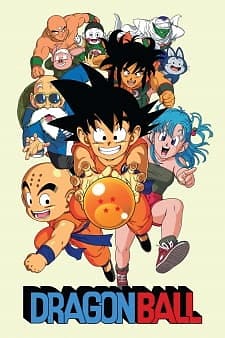
TV, 1986,
153 eps
Me:-
Author:-
While Dragon Ball has always the Reputation of a children's franchise in Homeland, its English localization has grown with the audience (although that doesn't stop the franchise having a broad Multiple Demographic Appeal). This is due to Japan and America having very different ideas about what is and isn't appropriate for children in media and Funimation's localization attitude changing drastically a few years after Dragon Ball was launched. Originally, Funimation heavily re-versioned the series to reflect western animation of the time and follow strict syndication rules. When syndication ended, the show was edited to be Kinder and Cleaner and family-friendly on TV and VHS, but was uncut on DVD. The uncut release (with blood, violence and mild swearing) is now the only version of the series available. Dragon Ball Z Kai: The Final Chapters and Dragon Ball Super both premiered on [adult swim], with no family-friendly version (at least in the United States until Toonami in Asia became defunct) for now.
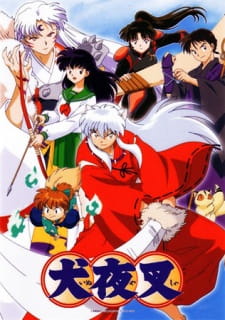
TV, 2000,
167 eps
Me:-
Author:-
While the original Inuyasha anime was broadcast in a general audience timeslot in Japan (Mondays at 7 p.m.) with the primary target of preteens, Inuyasha: The Final Act aired in the Otaku O'Clock timeslot and is aimed at finally giving a manga-based conclusion to those original preteen fans.

TV, 2011,
51 eps
Me:-
Author:-
was and still is a series intended for the shonen audience, but its anime has been running for so long that the audience reading it in 2003 will have long become young adults by 2013, with its anime following suit. While earlier anime arcs aired at standard viewing hours for children's shows, the nastier, bloodier arcs like Rakuyo that came in its later years aired at Otaku Hours, knowing full well their audience would be able to see it despite the time shift.
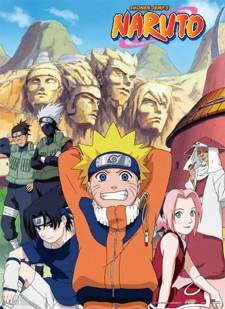
TV, 2002,
220 eps
Me:-
Author:-
is aimed at elementary schoolers in Japan, even with all the blood and violence. For the English dub, when it began airing in the 2000s, Cartoon Network would air a "family friendly" version that censored some of that stuff, while the "uncut" version was aimed at teenagers and adults. Since the show was Screwed by the Network and mainly regulated to home releases until the Toonami relaunch, the series has mostly done away with the "family friendly" version and focuses on the "uncut" one.
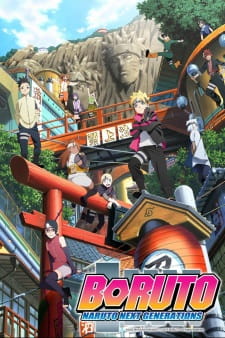
TV, 2017,
293 eps
Me:-
Author:-
In Japan, Boruto is literally Aimed at Small Children than its predecessor Naruto and was even moved to a kid's block alongside Pokémon: The Series. In America, it's TV-PG and airs on Toonami (one of the episodes was rated TV-MA-S, a first for not just the series, but the whole franchise). It's not even one of the Toonami anime advertised at kids, like My Hero Academia and Dragon Ball Super.
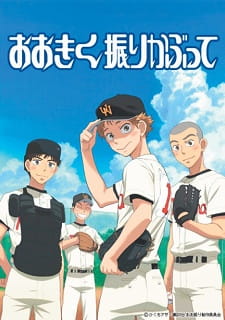
TV, 2007,
25 eps
Me:-
Author:-
is technically aimed at an adult male audience since the manga runs in a seinen magazine, but it still has an overwhelming number of female fans thanks to the cute male characters and the rampant Ho Yay between them.
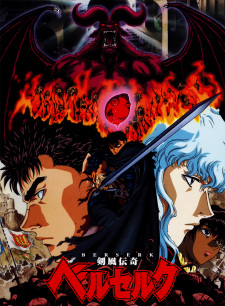
TV, 1997,
25 eps
Me:-
Author:-
Is a Famous Case, Since It's Technically Geared Toward Young Adults Audience Usually 18-25, The Authority Speak before Berserk was Finished, It's Intended To Geared Toward the Shoujo Audience for Some Reason.
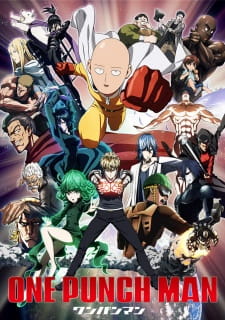
TV, 2015,
12 eps
Me:-
Author:-
Like Berserk But One Punch Man Stay Always Targeted Toward Young Adults of 18-25 Because It's Serialized on Tonari no Young Jump, This Manga Howewhere in Japan Gained a Massive Popularity Among Middle Aged Man in their 40-65 Despite the Magazine in Which Is Serialized It's not Aimed at This Age Bracket, and in Contrary Cases It's Also Popular among the Shonen Audience and One Punch Man Became a Shonen Manga in the US Thank by VIZ Media that Put the Work in Shonen Jump Alpha.
• Simple, in the past 15 years or so seinen manga became sort of "general audience" manga when it comes to awards. It's about how they label their awards and how they label their manga to get to a wider public: women tend to read both shounen and shoujo, both seinen and josei while most men tend to just stick to reading shounen and seinen, targeted towards the male demographic. Since it's like that, female mangaka feel boxed in, they feel that publishing just in a shoujo or josei magazine, their manga won't reach a wider audience. Also keep in mind, feminine seinen like Raise wa are an exception, there are seinen manga like Mushishi, Dorohedoro etc created by female mangaka that targeted the male audience. Also female mangaka that created shounen manga like Magi, Full Metal Alchemist etc. (I created entire stacks of seinen and shounen manga created by female mangaka).
• Simple, in the past 15 years or so seinen manga became sort of "general audience" manga when it comes to awards. It's about how they label their awards and how they label their manga to get to a wider public: women tend to read both shounen and shoujo, both seinen and josei while most men tend to just stick to reading shounen and seinen, targeted towards the male demographic. Since it's like that, female mangaka feel boxed in, they feel that publishing just in a shoujo or josei magazine, their manga won't reach a wider audience. Also keep in mind, feminine seinen like Raise wa are an exception, there are seinen manga like Mushishi, Dorohedoro etc created by female mangaka that targeted the male audience. Also female mangaka that created shounen manga like Magi, Full Metal Alchemist etc. (I created entire stacks of seinen and shounen manga created by female mangaka).
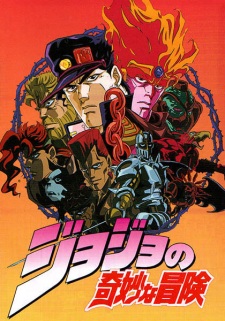
OVA, 1993,
6 eps
Me:-
Author:-
Jojo's Franchise start as a Shonen Manga but from Steel Ball Run Shifted Toward Seinen Magazines.
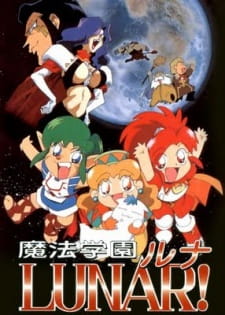
Movie, 1997,
1 ep
Me:-
Author:-
The Game Is Aimed at Teenager While the Anime Is a Chibi Gag Comedy Aimed at a Younger Audience.
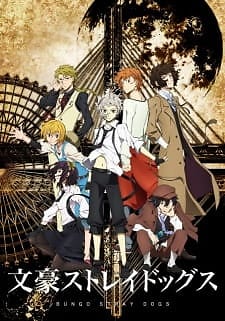
TV, 2016,
12 eps
Me:-
Author:-
large amount of teenagers in the bsd fandom and even kids, since bsd is a seinen, targeted towards adult men, (for example berserk is a seinen) but the deeper I look into it I think i understand why. The anime. The anime and manga are very different, the manga has a darker tone and feel, there's more suspense, you get more character development and backstory. All of which you don't get in the anime, which is rather cartoony, especially with the bright colors, and for example in the first episode when Kunikida choked Dazai, it looked like a cartoon. The anime also skims or even completely skips over important plot points, like atsushi's backstory, the guild, Fitzgerald's morals and thought process, the port mafia, etc etc. the anime for, since it's hard to animate every thing in a manga, but it gave bsd a more childish feel that made teenagers and kids attracted to.
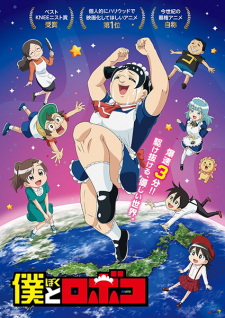
TV, 2022,
28 eps
Me:-
Author:-
In the past, Shonen Jump+ couldn't commission Doraemon-style childish gag manga from gag artists, but, Me & Roboco turned out to be a break from the rules. The author of Ayakashi Triangle has said that one of the reasons he was moved to Jump+ was because the fanservice was getting too much for Shounen Jump to field for its younger audiences. Shounen Jump editorial has come out and said that they are targeting younger kids which is why there's been a heavy push to establish Me & Roboco as one of the main pillars of Weekly Shounen Jump as well as attempts for more softer, lighter action.
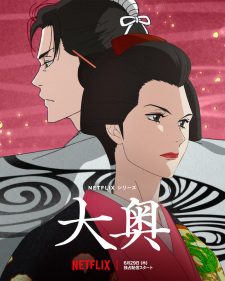
ONA, 2023,
10 eps
Me:-
Author:-
• Even the Age Range Is Higher Than Other Shoujo Mangas, Doesen't Mean Ooku is not a shoujo manga. It is shoujo and seinen manga depending on how people see it. Why can't a manga get two labels? There are already many manga that is published in two magazines, or got different label than the original magazine label. Why is Ooku 'monopolized'?
• Even More Confusing. some manga stores also put it in seinen manga if you searches it by label instead of magazine. Moreover, stores are just a distributors and is not official. It should not be used as reference. Juuouku no Are that is mentioned above, is published in ZZZQN!, the NTT Solmare's seinen magazine, but it is marketed as josei manga. JK Haru is published in Ututu, a josei manga magazine but is often marketed as a seinen manga in many manga stores. Horimiya, Kuroshitsuji, Tales Reincarnation of Maydare, published in a shounen magazine GFantasy, but often are marketed as shoujo/josei manga. Those rofan manhwa don't really have shoujo shounen labels, but it got the imprint label FLOS Comics, so they are known as shoujo manga.
• Even More Confusing. some manga stores also put it in seinen manga if you searches it by label instead of magazine. Moreover, stores are just a distributors and is not official. It should not be used as reference. Juuouku no Are that is mentioned above, is published in ZZZQN!, the NTT Solmare's seinen magazine, but it is marketed as josei manga. JK Haru is published in Ututu, a josei manga magazine but is often marketed as a seinen manga in many manga stores. Horimiya, Kuroshitsuji, Tales Reincarnation of Maydare, published in a shounen magazine GFantasy, but often are marketed as shoujo/josei manga. Those rofan manhwa don't really have shoujo shounen labels, but it got the imprint label FLOS Comics, so they are known as shoujo manga.
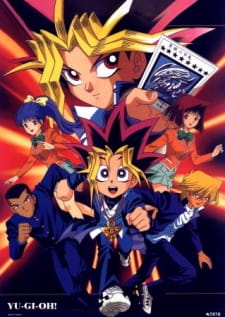
TV, 1998,
27 eps
Me:-
Author:-
• The very earliest manga stuff and Season 0 of the anime are shonen, which means they're pretty much for a 12+ audience (generally the shonen age demo starts at 12 and anything targeted younger is "kodomo" media, like Pokemon, Sanrio stuff, you get the idea).
• However, pretty much as soon as the card game started to take off and absorb the rest of the franchise, and it shifted away from "Egyptian game-god puts people in Saw traps," YGO turned into a kodomo franchise and dropped its age target by a number of years.
• The YGO: Duel Monsters manga was still allowed to be a little bit edgy at times, because it never left Weekly Shonen Jump and never changed its age target (sort of like how one of the Pokemon manga is inexplicably a lot bloodier than you'd expect), but the anime has always been extremely overtly "kiddy" ever since it properly started, and the card game is targeted to the anime's younger audience.
• e: The funniest part of all of this is, the YGO manga actually got here unscathed with no censorship whatsoever beyond having the names match the dubbed version of the anime (and that might've only been in Shonen Jump magazine, I think the volume releases might actually use the Japanese names). Viz was able to just put a 12+ recommendation on it and sell it wherever the hell, because nobody really pays as much attention to books and this was still kinda early-days as far as manga blowing up.
• However, pretty much as soon as the card game started to take off and absorb the rest of the franchise, and it shifted away from "Egyptian game-god puts people in Saw traps," YGO turned into a kodomo franchise and dropped its age target by a number of years.
• The YGO: Duel Monsters manga was still allowed to be a little bit edgy at times, because it never left Weekly Shonen Jump and never changed its age target (sort of like how one of the Pokemon manga is inexplicably a lot bloodier than you'd expect), but the anime has always been extremely overtly "kiddy" ever since it properly started, and the card game is targeted to the anime's younger audience.
• e: The funniest part of all of this is, the YGO manga actually got here unscathed with no censorship whatsoever beyond having the names match the dubbed version of the anime (and that might've only been in Shonen Jump magazine, I think the volume releases might actually use the Japanese names). Viz was able to just put a 12+ recommendation on it and sell it wherever the hell, because nobody really pays as much attention to books and this was still kinda early-days as far as manga blowing up.

TV, 2025,
? eps
Me:-
Author:-
• There may indeed be "creepy" seinen series that match what you're describing, but it's really not at all the case for Witch Hat Atelier, which is vey much a story written for "everyone." Kodansha in the US markets it as all-ages, and while there are a few kind of scary storylines I would be cautious about sharing with a too-young reader, it really is a very sweet, wholesome and uplifting series that feels very intentional in depicting all sorts of people and diverse human nature and experiences in a relatable and celebratory way!
• This Demosteating In Japan, readers will be more familiar with magazines (how they are individually marketed) and how demographic labels are used (so they probably don’t assume seinen=for adult male readers in every case bc they know there is more nuance.)
In US, as I mentioned, Kodansha is already promoting Witch Hat as an all-ages title. I think it’s just English/western fans with an incomplete understanding of what the japanese demographic labels signify who sometimes get overly hung up on them.
• This Demosteating In Japan, readers will be more familiar with magazines (how they are individually marketed) and how demographic labels are used (so they probably don’t assume seinen=for adult male readers in every case bc they know there is more nuance.)
In US, as I mentioned, Kodansha is already promoting Witch Hat as an all-ages title. I think it’s just English/western fans with an incomplete understanding of what the japanese demographic labels signify who sometimes get overly hung up on them.
